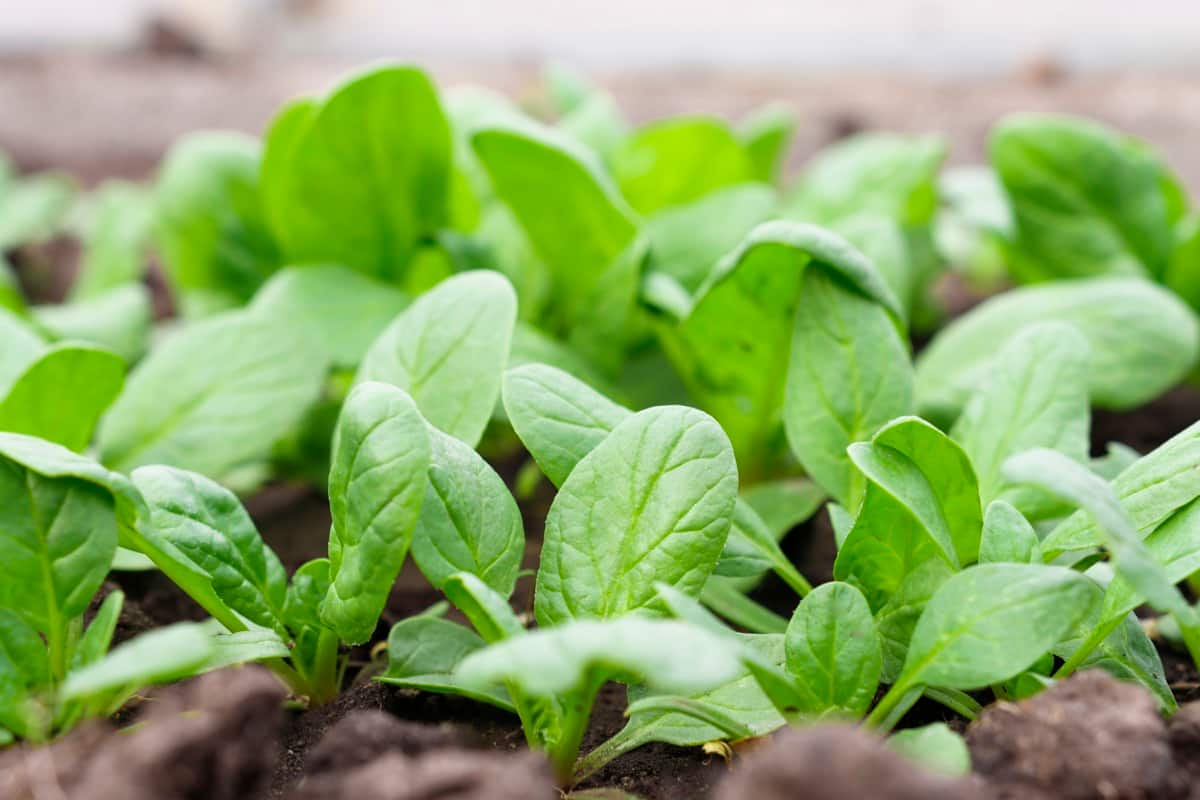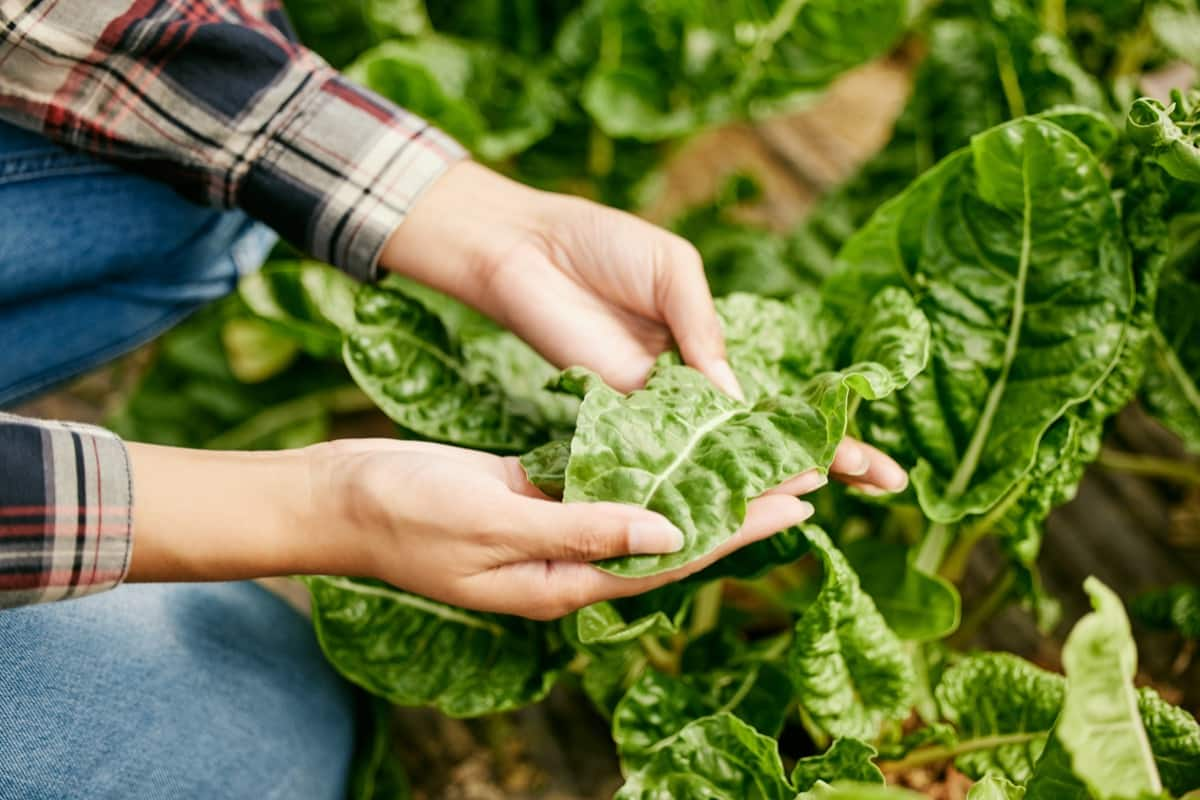Aphids are common pests that can cause significant damage to plants, including spinach. They feed on the sap of plants, which can cause leaves to be yellow, curl, and distort, leading to reduced plant growth and productivity. While biological control and non-chemical methods are often preferred for managing aphids, chemical control methods may sometimes be necessary. It’s essential to properly identify the aphid species and understand the best chemical management practices for each situation.

Management of Aphids in Spinach
The Life Cycle of Aphids
Egg stage: Aphids overwinter as eggs on the underside of spinach leaves or in the crevices of stems and buds. In early spring, the eggs hatch into nymphs.
Nymph stage: The nymphs are small, wingless, and resemble the adults but are smaller in size. They feed on the sap of the spinach plant and grow rapidly. The nymphs molt several times, shedding their skin as they grow, and can reach maturity in as little as 7 to 10 days.
Adult stage: The adult aphids are soft-bodied, 1 to 4 mm long, and have two long antennae resembling horns. They have two short cornicles, which secrete a waxy substance that helps protect them from predators and environmental stressors. Adult aphids reproduce asexually and can give birth to live young or lay eggs, depending on the species.
Reproduction stage: As adult aphids feed and reproduce, they produce large numbers of offspring, often leading to a population explosion known as an aphid “infestation.” This cycle can continue throughout the growing season until cooler temperatures in the fall trigger the formation of sexual forms, which produce fertilized eggs that can survive the winter
Factors Favoring Population Increase in Aphids in the Field
- Warm temperatures: Aphids reproduce more quickly in warm weather, allowing their populations to grow faster.
- Abundant food supply: Aphids feed on plant sap, and a large supply of host plants with high nutrient content can lead to increased reproduction and population growth.
- Lack of predators: When natural enemies such as ladybugs, lacewings, and parasitic wasps are absent, aphid populations can increase rapidly.
Identification of Aphids in the Spinach Field
- Aphids in spinach have soft, pear-shaped bodies with long legs and antennae.
- Depending on the species, they can be green, yellow, brown, red, or black.
- Some species appear waxy or woolly due to the secretion of a waxy white or gray substance over their body surface.
- Aphids in spinach have a pair of tubelike structures called cornicles projecting backward out of the hind end of their body.
- The presence of cornicles distinguishes aphids from all other insects.
- To identify aphids in spinach, look for these physical characteristics on the leaves and stems of the plants.
Damage Symptoms of Aphids in the Spinach Field
- Infestation of tender shoots and under the surface of leaves: Aphids feed on the sap of the plant, particularly on the new tender shoots and under the surface of the leaves. This can cause a weakening of the plant and lead to poor growth.
- Curling and crinkling of leaves: As aphids feed, they inject toxic saliva into the plant, which can cause the leaves to curl and crinkle. It makes it difficult for the plant to photosynthesize and can lead to a reduction in yield.
- Stunted growth: Aphids can stunt the growth of spinach plants, particularly if the infestation is severe. This can result in smaller leaves and a reduced yield.
- Development of black sooty mold: Aphids excrete a sugary substance called honeydew, which can encourage the growth of black sooty mold. This mold can cover the leaves and reduce their photosynthesis ability, reducing plant growth and yield.

Management of Aphids in Spinach by Cultural Method
- Use insectary plants: Insectary plants are planted specifically to attract beneficial insects. Plants like alyssum, buckwheat, and clover can attract beneficial insects like ladybugs and lacewings that feed on aphids.
- Crop rotation can help reduce the buildup of aphid populations in spinach fields. Avoid planting spinach in the same location year after year to reduce the risk of aphids and other pests.
Management of Aphids in Spinach by Biological Method
- Encourage natural enemies: Natural predators and parasitoids can help control aphid populations. Planting flowering plants like dill, fennel, and yarrow can attract beneficial insects like lacewings, ladybugs, and hoverflies that feed on aphids. Avoiding broad-spectrum pesticides can also help preserve the populations of natural predators.
- Release parasitoids: Parasitic wasps like Aphidius colemani, Aphelinus spp., and Diaeretiella sp. effectively control aphids. These wasps lay their eggs inside aphids, eventually leading to the aphid’s death. These parasitoids can be purchased and released in the spinach field.
Management of Aphids in Spinach by Chemical Method
- Systemic insecticides like imidacloprid are effective for serious aphid infestations but negatively impact predators, parasitoids, and pollinators.
- Imidacloprid or other systemic insecticides should not be applied to plants in or before bloom to protect pollinators.
Management of Aphids in Spinach by Organic/Natural Method
- Insecticidal soaps and oils are the best, as they kill aphids by smothering them.
- Thorough coverage of infested foliage is required, with a high volume of water and targeting the underside of leaves.
- Soaps, neem oil, and horticultural oil kill only aphids present when they are sprayed, so applications may need to be repeated.
- Use Natural Repellents: Planting aromatic herbs like mint and basil around the spinach field can help repel aphids. Spraying neem or garlic oil on the plants can also help deter aphids.
Preventive Measures for Control of Aphids in Spinach Fields
- Prune-infested leaves or shoots: Aphids can be pruned out to provide control if aphids are limited to just a few leaves or shoots.
- Check transplants for Aphids: Check transplants for aphids and remove any infested plants before planting.
- Use tolerant varieties: Use tolerant spinach varieties if available, as they can withstand some aphid damage without affecting the yield.
- Use reflective mulches: Reflective mulches, such as silver-colored plastic, can reduce aphids from feeding on plants.
- Use water spray: Sturdy plants can be sprayed with a strong water jet to knock aphids from leaves.

Conclusion
Identifying the aphid species and understanding the appropriate management practices to minimize the impact on beneficial insects and the environment is important. Integrated pest management strategies, including biological and non-chemical control methods, should be the first defense against aphids in spinach fields.
- Deworming Schedule for Dogs/Puppies: A Beginners Guide
- How to Prevent and Control Parasites in Goats
- Beneficial Insects in Pest Management
- Natural Solutions for Pest Control in Flower Gardens
- Types of Fungicides Used in Agriculture
- Common Issues in the Fruit Development Stage of Pomegranate Farming
- Fruit Development Issues in Papaya: Easy Solutions and Treatment
- Soil-Borne Diseases and How to Protect Your Plants
- Practices to Prevent Disease Spread in the Garden